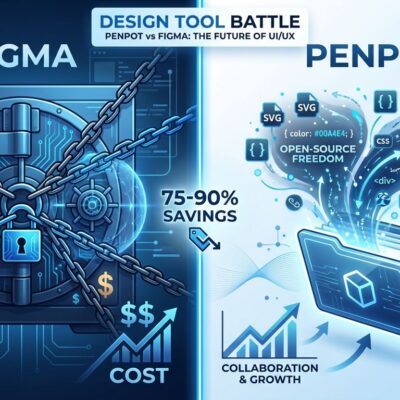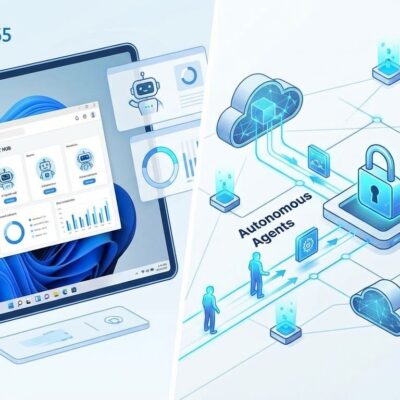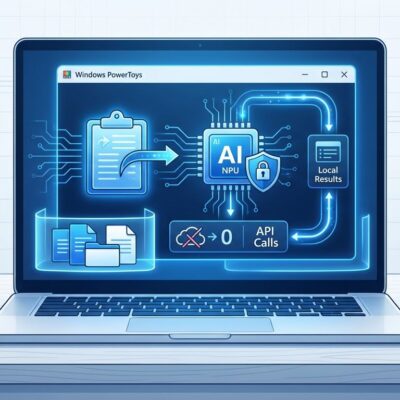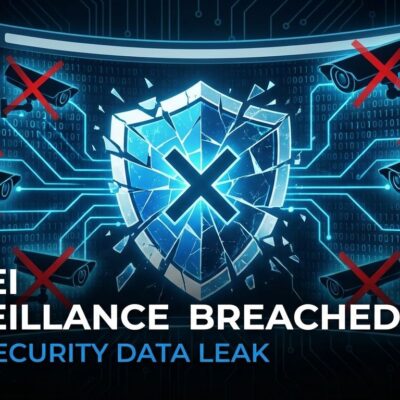
AI’s exponential growth is creating an energy crisis so severe that Big Tech is going nuclear—literally. On November 24, Amazon invested $700 million in X-energy to deploy 5 gigawatts of Small Modular Reactors by 2039. Google signed a deal with Kairos Power for 500 MW of SMR-generated electricity by 2035. Microsoft committed $1.6 billion to restart Three Mile Island’s Unit 1 reactor by 2027. These aren’t pilot projects or PR stunts—they’re billion-dollar bets that nuclear power is the only way to keep pace with AI’s insatiable appetite for electricity.
The AI Energy Crisis: 183 TWh and Doubling by 2030
Every time developers use ChatGPT, Claude, or Gemini, they’re tapping into data centers consuming the power of a small city. U.S. data centers used 183 terawatt-hours in 2024—4% of total U.S. electricity—and the IEA projects this will more than double to 426 TWh by 2030. Training GPT-4 alone required 30 megawatts of continuous power. A single AI hyperscaler consumes as much electricity annually as 100,000 households.
Traditional grids can’t scale fast enough. Construction timelines for data center power connections have extended to 2-6 years due to grid constraints. Renewable energy’s intermittency doesn’t match AI’s 24/7 demands—solar and wind don’t run around the clock, and battery storage maxes out at 4-8 hours. This infrastructure crisis is reshaping both the tech and energy industries. Big Tech realized they couldn’t just buy electricity from utilities anymore. They had to become energy companies themselves.
Big Tech’s $2B+ Nuclear Bet: Three Major Deals
Amazon’s $700 million investment in X-energy, announced November 24, 2025, brought the SMR developer’s total capital to $1.8 billion. Amazon plans to deploy 5 GW of Xe-100 reactors by 2039, starting with the Cascade Advanced Energy Facility in Washington state—a 960 MW plant comprising three 320 MW sections. X-energy now has an order book of 11+ GW, equivalent to 144 SMR units.
Google’s partnership with Kairos Power, announced in October 2024, marks the world’s first corporate agreement to purchase nuclear energy from multiple SMRs. Seven reactors total: one 50 MW demonstration reactor operational by 2030, plus three dual-reactor plants (75 MW each) reaching 500 MW by 2035. The Tennessee site will use a molten-salt cooling system with ceramic pebble fuel.
Microsoft’s 20-year power purchase agreement with Constellation Energy commits $1.6 billion to restart Three Mile Island Unit 1—835 MW restarting in 2027. The reactor, shut down in 2019 for economic reasons, is getting a $1 billion federal loan from the Trump administration and will be rebranded as “Crane Clean Energy Center.” Unit 1 was not involved in the 1979 accident (that was Unit 2).
This represents a paradigm shift: 80% of SMR projects are now driven by non-utility customers like tech companies, not traditional utilities. Whoever controls the energy infrastructure will control AI development.
The SMR Promise: Factory-Built Nuclear at Scale
Small Modular Reactors promise to solve traditional nuclear power’s biggest problems. SMRs are nuclear reactors with 300 MWe or less capacity—about one-third of traditional nuclear plants—designed to be factory-fabricated and transported to sites as prefabricated modules. The promise: 3-4 year construction timelines instead of 10-15 years, and modular scalability that lets operators start small and expand based on demand.
Unlike traditional nuclear plants built entirely on-site, SMRs are manufactured in controlled factory settings and shipped as modules. They use passive safety systems that rely on natural phenomena (gravity, natural circulation) for core cooling rather than complex active mechanical systems requiring operator intervention. Multiple units can be combined to scale capacity—X-energy’s 80 MW Xe-100 reactors can be grouped into 320 MW or larger plants. The smaller footprint allows deployment at locations unsuitable for traditional 1,000+ MW nuclear plants, including former coal sites that can reuse existing transmission infrastructure.
The theory is compelling: factory production should drive costs down through learning curves (like auto manufacturing), faster construction reduces financing costs, and modularity lets tech companies match reactor deployment to actual AI demand growth. Over 80 SMR designs are under development globally. This is why SMRs attracted $2B+ in Big Tech capital despite traditional nuclear’s troubled history.
Reality Check: The NuScale Problem
Every real-world SMR built to date has experienced significant construction delays and cost overruns. SMRs in China, Russia, and Argentina are all years behind schedule and proving more expensive per kilowatt than traditional reactors. The IEA estimates SMR overnight costs at $10,000/kW versus $6,600/kW for traditional nuclear in the EU. Small reactors aren’t cheaper because they’re modular—they’re more expensive because they lose economies of scale.
NuScale, the first SMR developer to receive U.S. regulatory approval in 2020, pulled the plug on its demonstration project in 2023 due to cost concerns. Regulatory approval doesn’t equal economic viability. “Not one of these SMRs coming close to meeting its projected three- to four-year construction schedule,” according to GIS Reports analysis. China and Russia’s SMRs are years behind schedule. Nuclear power plants average 120% cost overruns beyond original estimates—a pattern extending to SMRs.
Many advanced SMR designs require High-Assay Low-Enriched Uranium (HALEU), currently produced only in the U.S. and Russia. This creates supply chain risks and potential multi-year deployment delays. The Institute for Energy Economics and Financial Analysis concluded in May 2024: “Small modular reactors are still too expensive, too slow, and too risky to play a significant role in transitioning from fossil fuels in the coming 10 to 15 years.”
Amazon, Google, and Microsoft are betting billions on a technology that has never been successfully deployed at commercial scale in Western markets. China’s Linglong One (ACP100), expected to begin operations by end of 2026, will be the critical real-world test of whether SMRs can deliver on their promises.
The Timeline Paradox: AI Needs Power Now, SMRs Won’t Arrive Until 2030+
There’s a fundamental mismatch between AI’s energy crisis timeline (happening now, doubling by 2030) and SMR deployment schedules. Microsoft’s Three Mile Island restart in 2027 is the earliest timeline—and that’s restarting an existing traditional reactor, not a new SMR. Google’s first Kairos Power reactor won’t be operational until 2030, with full 500 MW deployment by 2035. Amazon’s Cascade facility targets early 2030s, with full 5 GW deployment by 2039.
Hacker News developers have it right: “Any new nuclear project is realistically going to take a minimum of 6 years to reach commercial production, compared to about 2 for a large-scale renewable + storage project.” AI data centers need to increase from 183 TWh (2024) to 426 TWh (2030)—before most SMRs are operational. The gap will be filled by natural gas, as evidenced by OpenAI’s 10 GW data center plans requiring massive gas capacity initially.
The dirty secret of Big Tech’s nuclear bet: they’ll burn a lot of fossil fuels while waiting for reactors to arrive. This exposes the tension between immediate AI infrastructure needs and long-term climate commitments. For developers, it means the AI tools you use in 2025-2030 will be powered mostly by gas, not the promised carbon-free nuclear energy.
Key Takeaways
- AI data centers are doubling electricity consumption by 2030 (183 TWh to 426 TWh in the U.S. alone)
- Big Tech has committed over $2 billion to nuclear power: Amazon $700M, Google 500 MW contracted, Microsoft $1.6B
- SMRs promise faster construction (3-4 years) but reality shows 6-10 years minimum, with 120% average cost overruns
- No commercial SMR has succeeded in Western markets yet—China’s Linglong One (2026) is the critical proof point
- The timeline gap means AI will run on natural gas until nuclear arrives (2030+), contradicting climate goals
Big Tech is betting billions that nuclear can solve AI’s energy crisis. The real question is whether SMRs can deliver before the hype collapses—or before someone figures out how to make AI more energy-efficient instead.
—







